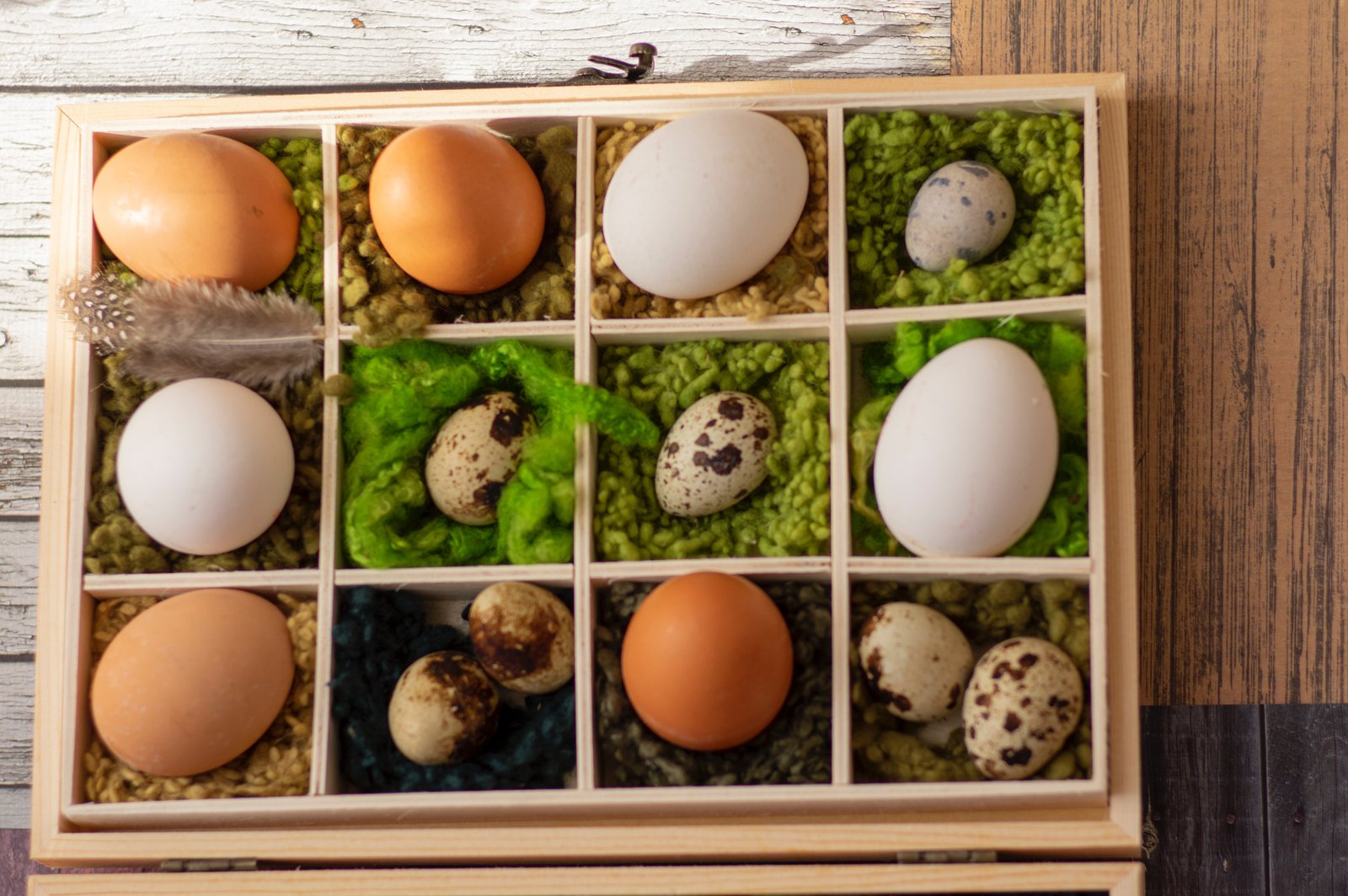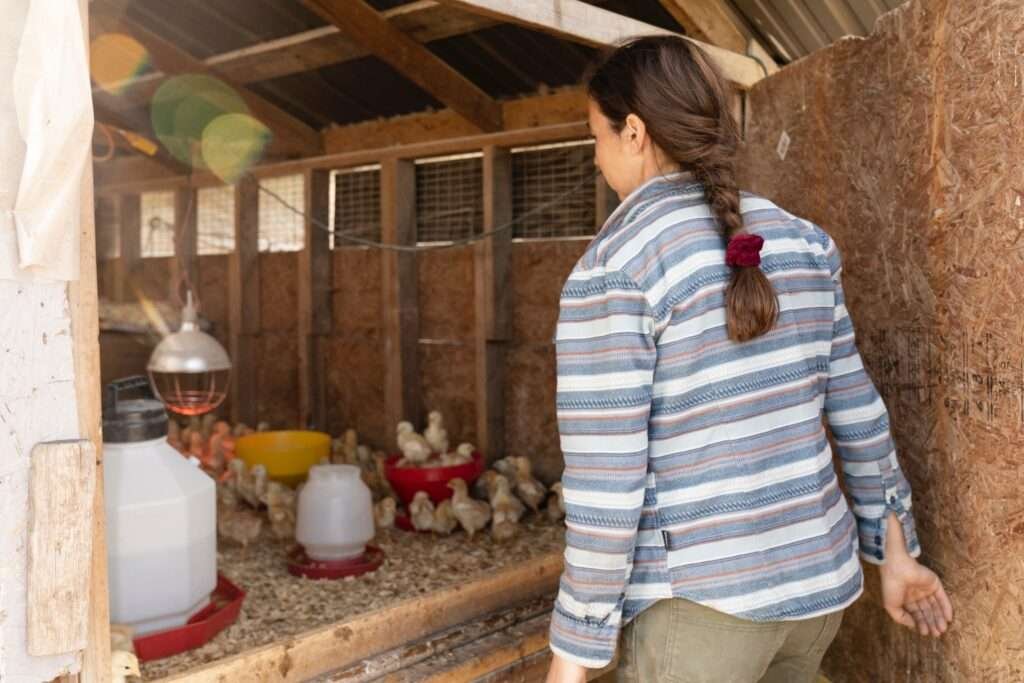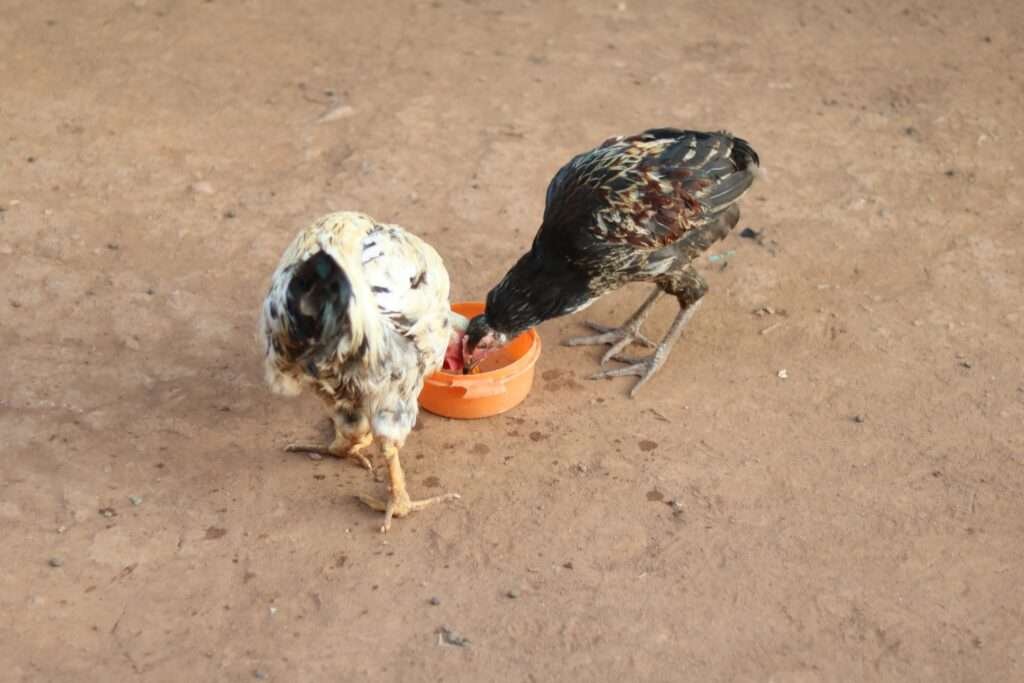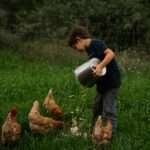Raising baby chicks with kids is not just a delightful activity; it’s a wonderful opportunity for families to bond and learn together. The experience of nurturing these fluffy bundles of energy can leave a lasting impact on kids, teaching them valuable life skills and fostering a deep appreciation for the natural world. In this guide, we’ll explore the joys and responsibilities of raising baby chicks with kids, from preparing for their arrival to watching them grow and thrive.
Preparing for Arrival: Equipment and Setup
Before the adorable chirping of baby chicks fills your home, it’s important to have the right equipment and setup ready. Creating a comfortable and safe environment for the chicks is essential to their well-being and development.
Essential Equipment:
- Brooder: A brooder is a designated enclosure where the chicks will live during their early weeks. It can be a large cardboard box or a specially designed brooder pen.
- Heat Lamp: Baby chicks require consistent warmth. A heat lamp suspended above the brooder provides the necessary temperature.
- Bedding: Line the brooder with pine shavings, paper towels, or other suitable bedding materials to create a cozy space for the chicks.
- Feeder and Waterer: Provide a chick-sized feeder and waterer to ensure they have access to food and water.
- Thermometer: Monitor the brooder temperature using a thermometer to ensure it’s within the recommended range.
Setting Up the Brooder:
- Place the brooder in a draft-free area of your home, away from direct sunlight and extreme temperatures.
- Position the heat lamp so that chicks can move to a warmer or cooler area within the brooder.
- Spread bedding material evenly across the floor of the brooder, creating a soft surface for the chicks to rest and walk on.
- Fill the feeder with chick starter feed and the waterer with clean, fresh water.
Creating a comfortable and well-equipped brooder is the first step in providing a nurturing environment for the baby chicks. With everything in place, you’re ready to welcome your new feathered friends.

Raising Baby Chicks with Kids: Safety and Responsibilities
Involving kids in the process of raising baby chicks is not only a fun adventure but also an excellent way to teach them responsibility and empathy. However, it’s crucial to ensure their involvement is safe and appropriate.
Age-Appropriate Tasks:
- Younger children (ages 4-7) can help with simple tasks like refilling the waterer with adult supervision.
- Older kids (ages 8-12) can assist with feeding, observing chick behavior, and cleaning under adult guidance.
- Teach kids to handle chicks gently, supporting their bodies and avoiding sudden movements.
Safety Guidelines:
- Emphasize the importance of washing hands before and after handling chicks to prevent the spread of germs.
- Explain that chicks are delicate creatures and must be treated with care and respect.
- Remind kids to avoid picking up chicks too frequently, as it can cause stress.
By involving kids in age-appropriate tasks, you’re not only instilling important values but also creating lasting memories and a sense of accomplishment. In the next section, we’ll delve into an exciting aspect of the chick-raising journey: candling eggs to witness the miracle of life.
The Miracle of Life: Candling Eggs
One of the most captivating and educational aspects of raising baby chicks with kids is candling eggs. Candling is the process of shining a light through an egg to observe the developing embryo inside. This hands-on activity allows kids to witness the early stages of life and gain insights into the process of egg incubation.
Understanding Candling: Candling eggs serves as a window into the incubation process, revealing whether the embryo is developing as expected. While specialized candling devices are available, a bright flashlight works well for this purpose.
The Steps to Candling:
- Select a darkened room to enhance visibility.
- Gently hold the egg against the flashlight, covering one end with your hand to block excess light.
- Observe the interior of the egg. You may see veins, shadows, and even movement if the embryo is developing.
Observing Development:
- After about a week, a network of blood vessels becomes visible in fertile eggs.
- Over time, kids can witness the embryo’s growth, including the formation of a beating heart.
- Explain that not all eggs will contain developing embryos, and that’s perfectly normal.
Candling eggs provides an incredible opportunity for kids to connect with the life cycle in a tangible way. As they watch the gradual transformation from a simple egg to a living chick, they’ll develop a deeper understanding of biology and the magic of creation.

Learning When Raising Baby Chicks with Kids
Raising baby chicks offers a wealth of learning opportunities for kids that extend far beyond the joy of having fluffy companions. These experiences contribute to their education, personal development, and understanding of the world around them.
Responsibility and Routine:
- Kids learn the importance of daily chores, like feeding and watering the chicks.
- Caring for living creatures teaches them about commitment and consistency.
Empathy and Compassion:
- Witnessing the vulnerability of baby chicks fosters empathy.
- Kids understand the significance of providing care and comfort to animals.
Biology and Life Cycle:
- Through candling and observing growth, children gain insights into biological processes.
- They learn about incubation, hatching, and the stages of chick development.
Understanding Food Sources:
- Discuss how chickens contribute to food production.
- Kids learn that eggs come from chickens, fostering a connection to their food sources.
Hands-On Science:
- Raising chicks offers a practical science lesson.
- Kids observe behaviors, growth patterns, and interactions in a real-life context.
By engaging in these learning opportunities, kids develop a well-rounded appreciation for nature, biology, and their role in caring for living creatures. As they raise baby chicks, they’re sowing the seeds of curiosity and a lifelong love for animals.

Daily Care Routine for Raising Baby Chicks with Kids
Caring for baby chicks involves a set of daily tasks that teach kids about commitment and routine. Establishing a clear care routine not only ensures the well-being of the chicks but also imparts important life skills to children.
Feeding:
- Show kids how to fill the chick feeder with appropriate starter feed.
- Explain the nutritional needs of the chicks for growth and development.
Watering:
- Teach kids to check the waterer daily and refill it with clean, fresh water.
- Discuss the importance of hydration for the chicks’ health.
Observation and Interaction:
- Encourage kids to spend time observing chick behavior.
- Discuss what they observe, such as chicks scratching, pecking, and socializing.
Cleaning:
- Explain the importance of a clean environment for the chicks’ health.
- Kids can assist in removing soiled bedding and replacing it with clean material.
Establishing a daily care routine teaches kids about commitment, responsibility, and the importance of providing consistent care to their feathered friends. As they tend to the needs of the chicks, they’ll witness firsthand the impact of their actions on the chicks’ growth and well-being.
Bonding Time: Socializing with Chicks
Interacting with baby chicks isn’t just about performing tasks; it’s also about building trust and forming a bond. Kids can actively engage with chicks in gentle and respectful ways that contribute to their well-being and socialization.
Talking and Singing:
- Encourage kids to talk softly and sing to the chicks.
- Explain that chicks recognize voices and find comfort in familiar sounds.
Hand-Feeding Treats:
- Introduce treats like finely chopped greens or mealworms.
- Guide kids in offering treats from their hands to help chicks associate them with positive interactions.
Holding and Cuddling:
- Teach kids how to hold chicks properly and gently.
- Supervise interactions to ensure both chicks and kids are comfortable.
Perching Playtime:
- Create perches within the brooder for chicks to hop onto.
- Kids can gently encourage chicks to perch on their hands or fingers.
Through these interactions, kids develop a sense of connection with the chicks. They learn that animals have personalities and preferences, and they gain confidence in handling and caring for living creatures. This bonding time enhances the overall experience of raising baby chicks, creating memories that last a lifetime.

Growth and Development
Witnessing the growth and development of baby chicks is a truly remarkable experience for kids. From the moment they hatch to the time they start to feather out, each stage of chick development offers unique insights into the world of these tiny creatures.
Hatching:
- Explain the incubation period and what to expect during this time.
- Kids can eagerly anticipate the moment when chicks begin to hatch.
Newborn Chicks:
- Describe the appearance of freshly hatched chicks.
- Share how kids can assist if a chick needs gentle help during hatching.
Feathering Out:
- Discuss the gradual growth of feathers as chicks age.
- Highlight how kids can observe the transformation from downy fluff to feathers.
Exploring and Learning:
- Kids can watch as chicks begin to explore their surroundings.
- Explain how chicks learn to scratch, peck, and interact with each other.
Introducing Chicks to the Outdoors
As the chicks continue to grow and develop, the time will come to transition them from the brooder to an outdoor coop. This step marks an important milestone in their journey and offers kids a chance to witness the chicks’ adaptation to their new environment.
Choosing the Right Time:
- Explain the ideal age to transition chicks to the coop.
- Kids can participate in preparing the coop and ensuring it’s ready for the new arrivals.
Gradual Acclimatization:
- Discuss the importance of gradually introducing chicks to the outdoors.
- Kids can help monitor the chicks’ reactions and comfort during the transition.
Providing Protection:
- Teach kids about the importance of predator-proofing the coop.
- Explain how to secure the coop to keep the chicks safe.

Saying Farewell: Transition to the Coop
As the chicks grow and mature, the time will come to fully integrate them into the outdoor coop with adult chickens. This process allows kids to witness the chicks’ journey from young and vulnerable birds to confident members of the flock.
Introducing to the Flock:
- Discuss the gradual introduction of chicks to the existing flock.
- Kids can observe the dynamics and interactions as chicks integrate.
Supervised Interaction:
- Encourage kids to observe the interactions between chicks and adult chickens.
- Explain the importance of monitoring their behavior to ensure a smooth transition.
Continuing Care:
- Kids can continue to assist in providing care for the chickens as they become part of the larger flock.
- Highlight the ongoing responsibilities of feeding, watering, and ensuring their well-being.
Raising Baby Chicks With Kids
Raising baby chicks with kids is a journey filled with wonder, learning, and growth. From the initial preparations to the daily care routine, candling eggs, and observing chick development, each step offers a unique opportunity for kids to connect with nature and cultivate important life skills. As they care for and bond with their feathered friends, kids learn responsibility, empathy, and the delicate balance of nurturing life. This shared experience not only strengthens family bonds but also instill’s a lifelong appreciation for animals and the natural world. Whether it’s the first cheep of a newly hatched chick or the sight of feathered friends confidently exploring their coop, the journey of raising baby chicks with kids is a memory that will be cherished for years to come.





